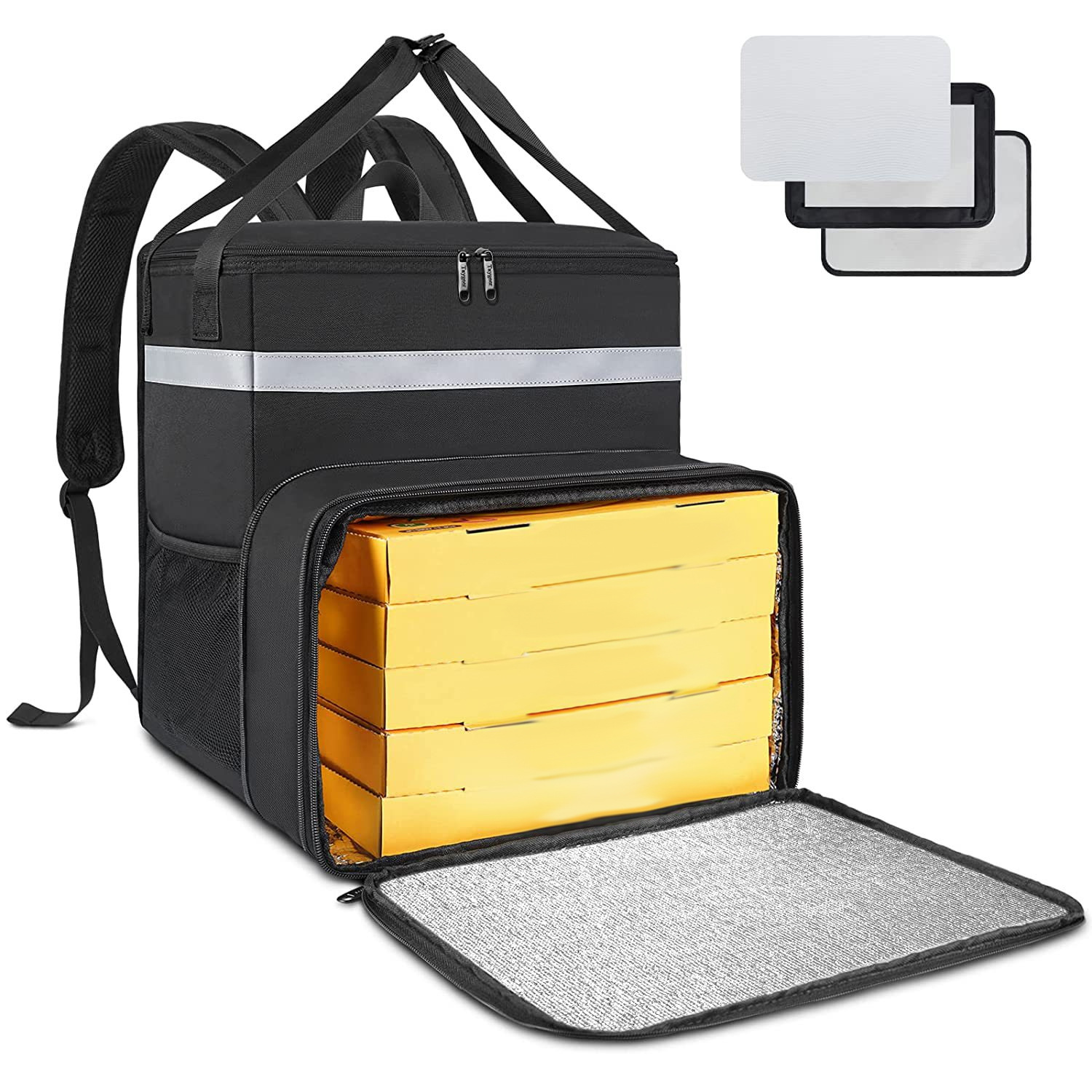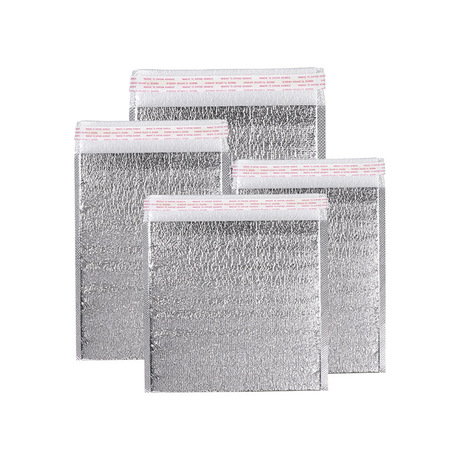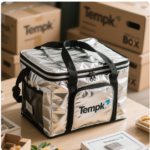Das Vorhandensein von Umweltverschmutzung in Eisbeutel hängt hauptsächlich von ihren Materialien und ihren Gebrauch ab. In einigen Fällen, Wenn das Material oder das Herstellungsprozess der Eisbeutel nicht entspricht, entspricht keine Standards für die Lebensmittelsicherheit, Es kann tatsächlich Kontaminationsprobleme geben. Hier sind einige wichtige Überlegungen:
1. Chemische Zusammensetzung:
-Einige minderwertige Eisbeutel können schädliche Chemikalien wie Benzol und Phthalate enthalten (Ein häufig verwendeter Weichmacher), was ein Gesundheitsrisiko darstellen kann. Diese Chemikalien können während des Gebrauchs in Lebensmittel eindringen, vor allem in Hochtemperaturumgebungen.
2. Beschädigung und Leckage:
-Wenn der Eisbeutel während des Gebrauchs beschädigt oder durchgesickert ist, Das Gel oder die Flüssigkeit im Inneren kann mit Lebensmitteln oder Getränken in Kontakt kommen. Obwohl die meisten Eisbeutelfüller ungiftig sind (wie Polymergel oder Salzlösung), Direkter Kontakt wird immer noch nicht empfohlen.

3. Produktzertifizierung:
-Bei der Auswahl eines Eisbeutels, Überprüfen Sie die Zertifizierung der Lebensmittelsicherheit, wie die FDA -Zustimmung. Diese Zertifizierungen zeigen, dass das Material des Eisbeutels sicher und für Kontakt mit Lebensmitteln geeignet ist.
4. Richtige Verwendung und Speicherung:
-Stellen Sie die Sauberkeit von Eisbeutel vor und nach dem Gebrauch sicher, und sie richtig aufbewahren. Vermeiden Sie das Zusammenleben mit scharfen Objekten, um Schäden zu vermeiden.
-Wenn Sie einen Eisbeutel verwenden, Es ist am besten, es in einen wasserdichten Beutel zu legen oder mit einem Handtuch zu wickeln, um direkten Kontakt mit Lebensmitteln zu vermeiden.
5. Umweltfragen:
-Berücksichtigung des Umweltschutzes, Wiederverwendbare Eisbeutel können ausgewählt werden, und die Aufmerksamkeit der Recycling- und Entsorgungsmethoden von Eisbeutel, um die Umweltverschmutzung zu verringern.
Zusamenfassend, Auswahl hochwertiger und angemessen zertifizierter Eisbeutel, und sie richtig verwenden und speichern, kann das Risiko einer Umweltverschmutzung minimieren. Wenn es besondere Sicherheitsbedenken gibt, Sie können vor dem Einkauf ein detailliertes Verständnis für Produktmaterial und Benutzerbewertungen haben.

Die Hauptkomponenten von gekühlten Eisbeuteln
Kühlte Eisbeutel bestehen in der Regel aus mehreren wichtigen Materialien, die darauf abzielen, eine gute Isolierung und eine ausreichende Haltbarkeit zu ermöglichen. Die Hauptmaterialien umfassen:
1. Außenschichtmaterial:
-Nylon: Leicht und langlebig, häufig auf der äußeren Schicht hochwertiger Eisbeutel verwendet. Nylon hat einen guten Verschleißfestigkeit und Tränenwiderstand.
-Polyester: Ein weiteres häufig verwendetes Material aus Außenschicht, etwas billiger als Nylon, und hat auch eine gute Haltbarkeit und Tränenwiderstand.
-Vinyl: Geeignet für Anwendungen, die wasserdichten oder leicht zu reinigen Oberflächen erfordern.
2. Isolationsmaterial:
-Polyurethanschaum: Es ist ein sehr häufiges Isoliermaterial, und wird aufgrund seiner hervorragenden thermischen Isolationsleistung und leichten Merkmale in Kühltaschen häufig verwendet.
-Polystyrol (EPS) Schaum: Auch als Styropor bekannt, Dieses Material wird üblicherweise in tragbaren Kaltkästen und einigen einmaligen Kühllösungen verwendet.
3. Innenmaterial:
-Aluminiumfolie oder metallisierter Film: häufig als Auskleidungsmaterial verwendet, um die Wärme widerzuspiegeln und die innere Temperatur aufrechtzuerhalten.
-Food Grade Peva (Polyethylen -Vinylacetat): Ein ungiftiges Kunststoffmaterial, das üblicherweise für die innere Schicht von Eisbeuteln verwendet wird, in direktem Kontakt mit Nahrung, und ist beliebter, weil es keine PVC enthält.

4. Stange:
-Gelsack: Tasche mit speziellem Gel enthalten, Dies kann nach dem Einfrieren lange Zeit den Kühleffekt weiterhin erhalten. Gel wird normalerweise durch Mischen von Wasser und Polymer hergestellt (wie Polyacrylamid), Manchmal werden Konservierungsmittel und Frostschutzmittel hinzugefügt, um die Leistung zu verbessern.
-Salzwasser oder andere Lösungen: Einige einfachere Eisbeutel enthalten möglicherweise nur Salzwasser, Dies hat einen Gefrierpunkt, der niedriger als reines Wasser.
Bei der Auswahl eines geeigneten Kühltaschens, Sie sollten überlegen, ob das Material Ihren spezifischen Bedürfnissen entspricht, Besonders unabhängig davon, und ob der Eisbeutel häufige Reinigung oder Verwendung in bestimmten Umgebungen benötigt.
Die Hauptkomponenten von gefrorenen Eisbeuteln
Ein gefrorener Eisbeutel besteht typischerweise aus den folgenden Hauptkomponenten, jeweils mit spezifischen Funktionen, um sicherzustellen, dass der gefrorene Eisbeutel effektiv niedrige Temperaturen beibehält:
1. Außenschichtmaterial:
-Nylon: Nylon ist langlebig, wasserdicht, und leichtes Material, das für gefrorene Eisbeutel geeignet ist, die häufig Bewegung oder Außengebrauch erfordern.
-Polyester: Polyester ist ein weiteres häufiges haltbares Material, das üblicherweise für die äußere Schale von gefrorenen Eisbeuteln verwendet wird, mit guter Festigkeit und Verschleißfestigkeit.
2. Isolationsschicht:
-Polyurethanschaum: Es ist ein sehr effektives Isoliermaterial, und wird aufgrund seiner ausgezeichneten Wärmeretentionsfähigkeit in gefrorenen Eisbeuteln häufig eingesetzt.
-Polystyrol (EPS) Schaum: Auch als Styrolschaum bekannt, Dieses leichte Material wird auch häufig in Kühl- und Tiefkühlprodukten verwendet, vor allem in einmaligen Kühllösungen.
3. Innere Futter:
-Aluminiumfolie oder metallisierter Film: Diese Materialien werden üblicherweise als Auskleidung verwendet, um die Wärmeenergie widerzuspiegeln und die Isolierungseffekte zu verbessern.
-Food Grade Peva: Dies ist ein ungiftiges Kunststoffmaterial, das üblicherweise für die innere Schicht von Eisbeutel verwendet wird, Sicherstellung sicherer Kontakt mit Lebensmitteln.
4. Stange:
-Gel: Der häufig verwendete Füllstoff für gefrorene Eisbeutel ist Gel, die normalerweise Wasser enthält, Polymere (wie Polyacrylamid) und eine kleine Menge Additive (wie Konservierungsmittel und Frostschutzmittel). Dieses Gel kann viel Wärme aufnehmen und den Kühlungseffekt nach dem Einfrieren langsam freisetzen.
-Salzwasserlösung: In einigen einfachen Eisbeuteln, Salzwasser kann als Kühlmittel verwendet werden, einen langlebigeren Kühlungseffekt bieten.
Bei der Auswahl gefrorener Eisbeutel, Es ist wichtig sicherzustellen, dass die ausgewählten Produktmaterialien sicher sind, umweltfreundlich, und kann Ihre spezifischen Bedürfnisse erfüllen, wie Lebensmittelkonservierung oder medizinische Zwecke. In der Zwischenzeit, Betrachten Sie die Größe und Form der Eisbeutel, um sicherzustellen, dass sie für Ihren Behälter oder Ihren Lagerraum geeignet sind.























